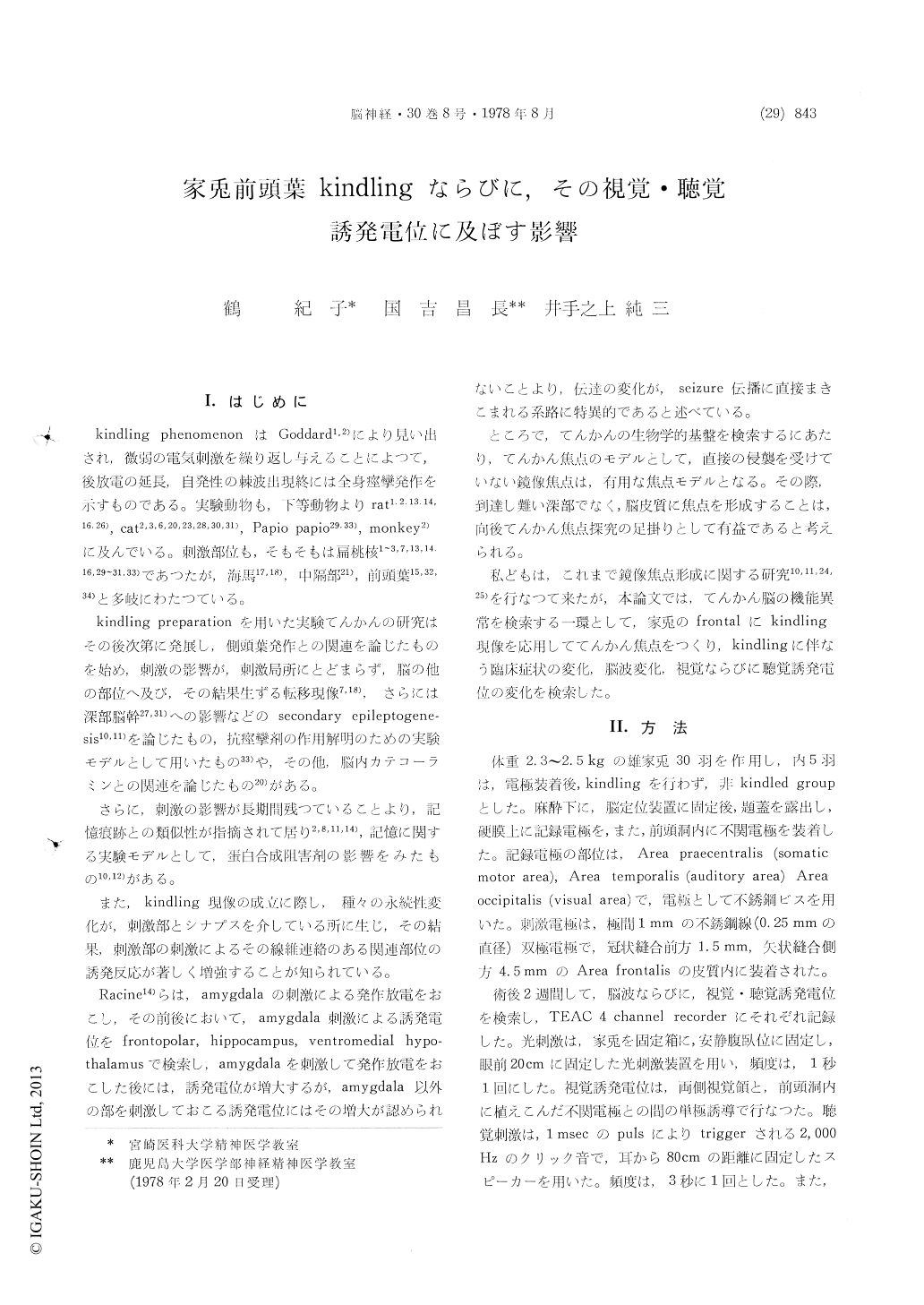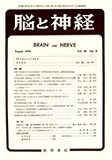Japanese
English
- 有料閲覧
- Abstract 文献概要
- 1ページ目 Look Inside
I.はじめに
kindling PhenomcnonはGoddard1,2)により見い出され,微弱の電気刺激を繰りし与えることによつて,後放電の延長,自発性の棘波出現終には全身痙攣発作を示すものである。実験動物も,下等動物よりrat1,2,13,14,16,26),cat2,3,6,20,23,28,30,31),Papio papio29,33),monkey2)に及んでいる。刺激部位も,そもそもは扁桃核1〜3,7,13,1416,29〜31,33)であつたが,海馬17,18),中隔部21),前頭葉15,32,34)と多岐にわたつている。
kindling preparationを用いた実験てんかんの研究はその後次第に発展し,側頭葉発作との関連を論じたものを始め,刺激の影響が,刺激局所にとどまらず,脳の他の部位へ及び,その結果生ずる転移現像7,18),さらには深部脳幹27,31)への影響などのsecondary epileptogene—sis10,11)を論じたもの,抗痙攣剤の作用解明のための実験モデルとして用いたもの33)や,その他,脳内カテコーラミンとの関連を論じたもの20)がある。
In our earlier stud ofy interictal dysfunction of epileptic brain, we showed the topological dif-ference of recruiting response following epilepto-genic focus formation. In this paper, we showed the daily frontal kindling in rabbits developed the elongation of afterdischarge accompanied with clinical feature development, and primary, dependent and/or independent mirror focus formation. And the visual and auditory evoked response were ex-amined.
Daily electrical stimulation (300 μA, 60Hz, 1msec, 2sec train) of the frontal cortex showed that rab-bits were kindled in that site. Clinical features were divided 5 stages. Those were :
1) No response or attention response.
2) Adversive movement with or without exten-tion of left forelimb and clonic convulsion
3) Adversive movement with mastication, saliva-tion, oral twitching with postictal akinetic state.
4) Fall down following generalized convusion.
5) Generalized convulsion with rotatory movement, vocalization and myoclonus.
The durations of afterdischarge were ranged from 2 or 3sec. on stage 1 to 400sec. on stage 5. The durations of afterdischarge were not constant even though on stage 5.
In the auditory evoked response, the second posi-tive component (P2: 73.3 msec), and the second negative component (N2: 146.7 msec) were shortened in peak latency in kindled group compared with control group. And the amplification of N2 com-ponent was recognized. On the other hand there was no significant change in the visual evoked re-sponse. Therefore, there was a discrepancy be-tween the change of the visual and the auditory evoked response.

Copyright © 1978, Igaku-Shoin Ltd. All rights reserved.


